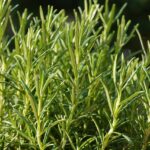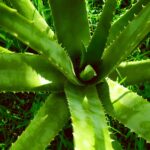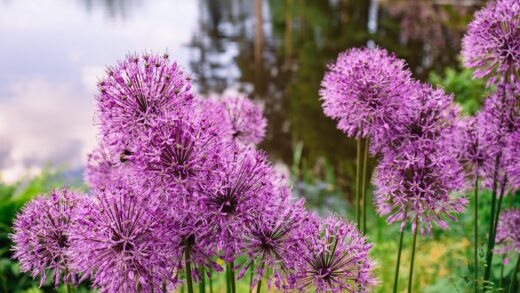Watering and fertilizing the black-eyed susan vine

Proper watering and a consistent fertilization schedule are fundamental pillars of care for the black-eyed susan vine, directly influencing its growth rate, foliage health, and, most critically, its ability to produce a profusion of its signature vibrant flowers. As a fast-growing tropical native, this plant has a significant appetite for both water and nutrients throughout its active growing season. Achieving the right balance is key; both over and under-supplying these essential resources can lead to stress, poor performance, and increased susceptibility to pests and diseases. Mastering these two aspects of its cultivation will reward the gardener with a stunning and continuous floral display.
Water is the lifeblood of the plant, essential for photosynthesis, nutrient transport, and maintaining turgor pressure in the cells, which keeps the foliage and stems firm. Thunbergia alata prefers soil that is consistently and evenly moist, a condition that mimics the humid environments of its native habitat. Allowing the soil to dry out completely, even for a short period, can cause the plant to wilt dramatically, drop its flower buds, and suffer from stress. Conversely, waterlogged soil deprives the roots of oxygen, creating an environment ripe for fungal diseases like root rot, which can be fatal.
Fertilization provides the necessary mineral nutrients that the plant cannot obtain from water and air alone. The vine’s rapid growth and prolific flowering demand a steady supply of macronutrients—nitrogen, phosphorus, and potassium—as well as various micronutrients. Starting with organically rich soil provides a good foundation, but the nutrient reserves in the soil, especially in containers, are quickly depleted by this hungry plant. A well-structured feeding regimen ensures that the vine has the fuel it needs to build lush foliage and, more importantly, to initiate and sustain a long blooming period from early summer until the first frost.
The specific needs for water and fertilizer are not static; they change throughout the plant’s life cycle and in response to environmental conditions. A small seedling has very different requirements compared to a large, mature vine covering a trellis in the heat of mid-summer. Factors such as temperature, sunlight intensity, humidity, and whether the plant is in a garden bed or a container all play a role. Therefore, attentive observation and a flexible approach, rather than a rigid schedule, are essential for providing optimal care.
Establishing a watering routine
Developing a consistent watering routine is crucial for the health of Thunbergia alata. The primary goal is to maintain even soil moisture without causing saturation. For plants in garden beds, a deep watering once or twice a week is often sufficient, depending on rainfall and soil type. Sandy soils will require more frequent watering than clay-based soils. It is always more effective to water deeply to encourage deep root growth, rather than applying small amounts of water frequently, which only wets the surface and promotes a shallow, less resilient root system.
More articles on this topic
For black-eyed susan vines grown in containers, the watering needs are significantly higher. Pots, especially those made of porous materials like terracotta, dry out much faster than garden soil. During hot, sunny, or windy weather, container-grown plants may need to be watered every day. The best method to determine the need for water is to physically check the soil. Insert a finger into the top two to three centimeters of the potting mix; if it feels dry, it is time to water.
The time of day for watering also matters. It is best to water plants in the morning, as this allows the foliage to dry out during the day, reducing the risk of fungal diseases that thrive in damp conditions overnight. Morning watering also ensures the plant is well-hydrated before the heat of the day, reducing the likelihood of wilting and stress. When watering, apply the water directly to the soil at the base of the plant, avoiding the leaves and flowers as much as possible.
An observant gardener will learn to recognize the signs of both under and overwatering. The most obvious sign of underwatering is wilting, where the leaves and stems become limp and droopy. The leaves may also turn yellow and become crispy at the edges. Overwatering can also cause wilting, but the leaves will typically be yellow or pale green and limp, and the soil will be soggy. Adjusting the frequency and volume of water based on these observations is key to maintaining a healthy plant.
Understanding fertilizer types
Choosing the right type of fertilizer is essential for meeting the nutritional needs of the black-eyed susan vine. Fertilizers are generally categorized as either water-soluble (liquid) or granular (slow-release). Water-soluble fertilizers are mixed with water and applied during a regular watering session. They provide a quick boost of nutrients that are immediately available to the plant, making them ideal for providing regular sustenance throughout the growing season or for correcting a nutrient deficiency quickly.
More articles on this topic
Granular, slow-release fertilizers, on the other hand, are designed to break down and release their nutrients over an extended period, typically three to six months. These can be mixed into the soil or potting medium at the time of planting, offering a convenient, ‘set-it-and-forget-it’ approach to feeding. While convenient, a very vigorous vine might still exhaust this nutrient supply before the season ends, especially in a container, and may benefit from supplemental liquid feeding during its peak flowering phase.
The nutritional content of a fertilizer is indicated by its N-P-K ratio, which represents the percentage of Nitrogen (N), Phosphorus (P), and Potassium (K). For Thunbergia alata, a balanced fertilizer is suitable, but one formulated for flowering plants is often recommended. These “bloom booster” formulas typically have a higher middle number (P for phosphorus), which is the key nutrient for promoting flower production, and a slightly lower first number (N for nitrogen) to prevent excessive leafy growth at the expense of blooms.
Organic fertilizers, such as compost, well-rotted manure, and fish emulsion, are also excellent choices. These not only supply nutrients but also improve the soil structure, water retention, and microbial activity. Incorporating compost into the soil at planting time provides a fantastic foundation. Liquid organic fertilizers like fish emulsion can be used in a similar way to synthetic water-soluble fertilizers, providing a gentle but effective source of nutrition throughout the season.
Creating a feeding schedule
A practical feeding schedule for a black-eyed susan vine begins at planting time. Incorporating a balanced, slow-release granular fertilizer into the soil or potting mix provides a baseline of nutrition for the first few months of growth. This initial application helps the young plant to establish a strong root system and healthy foliage, setting the stage for future flowering. This single step can significantly reduce the amount of supplemental feeding required later on.
Once the plant is actively growing and begins to produce flowers, it is time to start a regular liquid feeding program. Using a water-soluble fertilizer formulated for flowering plants, feed the vine every two to three weeks. For container-grown plants, which have a limited volume of soil and are subject to nutrient leaching from frequent watering, a more frequent schedule of every one to two weeks might be necessary. Always follow the package directions for the correct dilution rate to avoid over-fertilizing.
It is important to apply liquid fertilizer to moist soil. Fertilizing a plant when the soil is bone dry can cause the concentrated fertilizer salts to burn and damage the roots. Therefore, it is a good practice to water the plant with plain water first, and then follow up with the fertilizer solution. This ensures the nutrients are absorbed more effectively and safely by the root system.
As autumn approaches and temperatures begin to cool, the plant’s growth will naturally slow down. This is the signal to reduce and eventually stop fertilizing. Continuing to feed the plant as it enters dormancy is unnecessary and can be counterproductive. The plant is no longer in a state of active growth and cannot utilize the extra nutrients. Cease all fertilization approximately four to six weeks before the first expected frost.
Recognizing nutrient imbalances
Observing the plant’s leaves and growth habits can provide valuable clues about its nutritional status. A healthy, well-fed black-eyed susan vine will have deep green foliage and a profusion of flowers. Deviations from this appearance can often be traced back to a nutrient imbalance. Learning to read these signs allows for timely intervention and correction of the feeding regimen.
One of the most common issues is an excess of nitrogen. This results in a very lush, green, and leafy plant with very few or no flowers. While the foliage may look healthy, the primary ornamental purpose of the plant is defeated. If this occurs, switch to a low-nitrogen, high-phosphorus fertilizer (a bloom booster formula) and reduce the frequency of feeding to encourage the plant to shift its energy from vegetative growth to flower production.
Conversely, a nitrogen deficiency often manifests as a general yellowing of the leaves, particularly the older, lower leaves on the plant. The plant’s growth may also be stunted and weak. A pale green or yellowish appearance overall is a strong indicator that the plant requires more nitrogen. A dose of a balanced liquid fertilizer will typically resolve this issue quickly, greening up the foliage.
Other deficiencies can also occur. For instance, a lack of magnesium, a common micronutrient deficiency, can cause yellowing between the leaf veins while the veins themselves remain green. This can often be corrected with an application of Epsom salts (magnesium sulfate). The key is to respond to the plant’s signals with targeted adjustments rather than simply increasing the overall amount of fertilizer, which could exacerbate the problem. A balanced approach to feeding is always the most effective strategy.
📷 Forest & Kim Starr, CC BY 3.0, via Wikimedia Commons

















